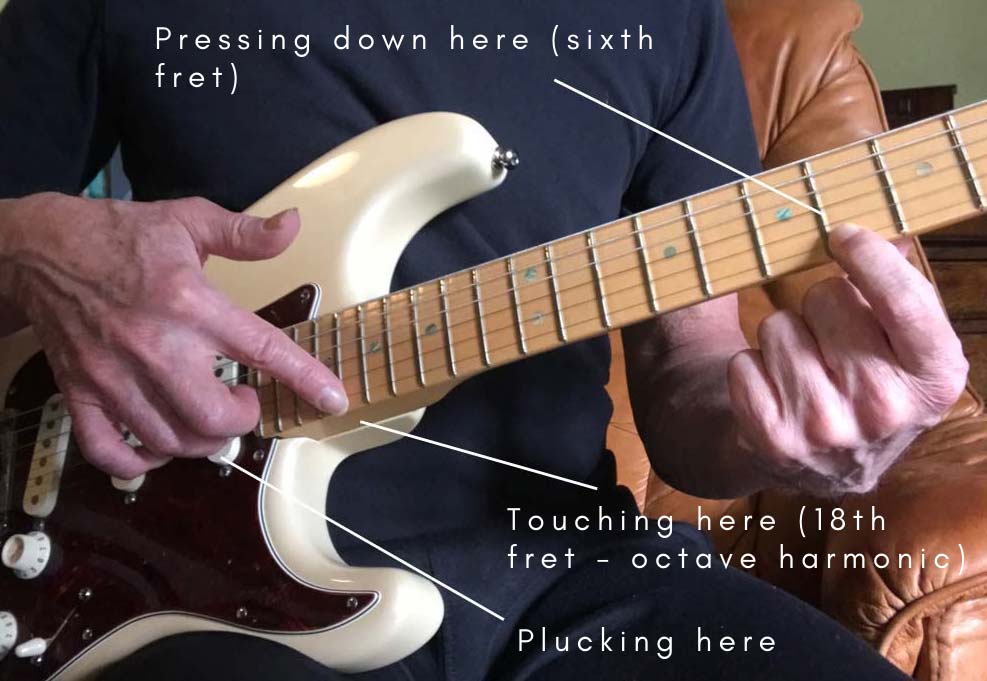artificial harmonic

An artificial harmonic, sounding an octave higher than the B flat on the sixth fret of the high E string, produced by touching the string at the 18th fret and plucking.
On a stringed instrument, an artificial harmonic is produced by holding down a note on the neck while lightly touching a node point (such as the note that is an octave higher) with the first finger of the other hand and simultaneously plucking the string with another finger (or plectrum). The advantage of this technique is that a harmonic can be produced anywhere on the neck rather than being restricted to the natural harmonics of the open string. The fretting hand is free to hold down any note you choose. The octave harmonic is then produced by touching the string exactly halfway between the bridge and the point at which you are holding down the string, and then plucking.
Artificial harmonics can played on both fretted instruments, such as the guitar, and unfretted ones, such as the violin, and the principle and, to a large extent, method of execution, are the same.


